Best 3D Printer Nozzle 2024 – Top Nozzle Choices for 3D Printing
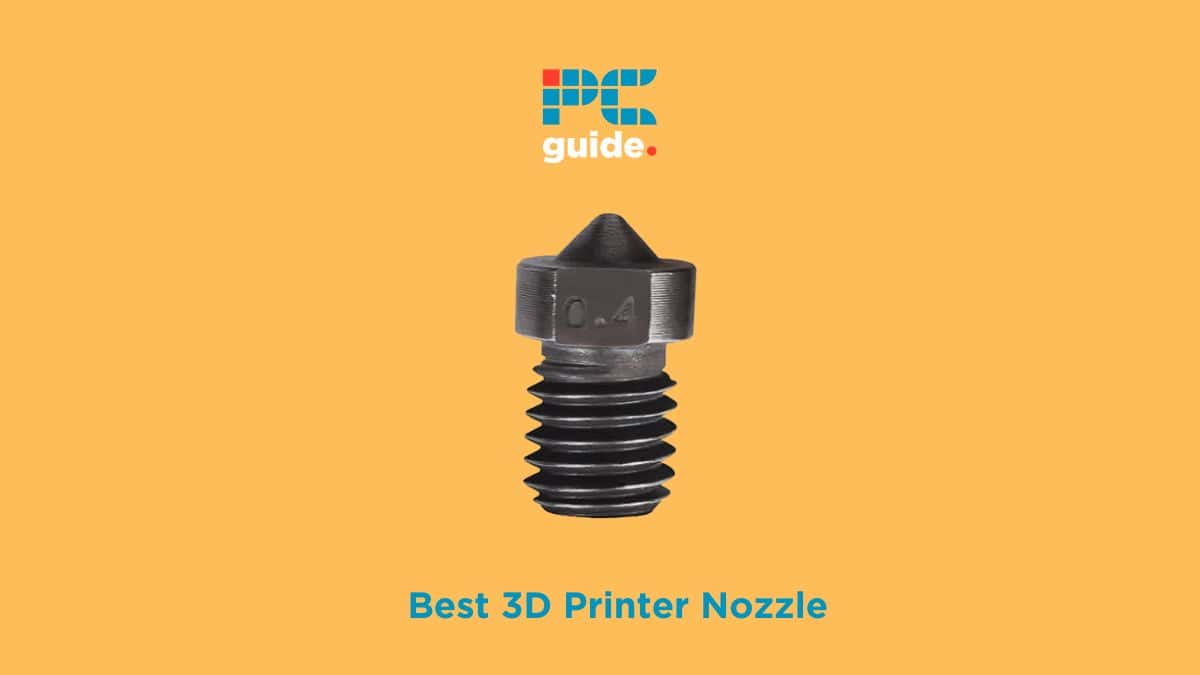
Table of Contents
Though the base equipment can do a great job, professional model-makers know that the best 3D printer nozzle for the job is a worthwhile investment. Tasked with depositing filament on the print bed to bring your designs to life, the nozzle has one of the most demanding jobs of any of the constituent parts of even the best 3D printers. It is the component that has the most significant impact on the final quality of your creations, and as such is well worth spending the time and money to find the right nozzle to level up your 3D printing experience.
With the ever-rising popularity of 3D printing, there are countless nozzles of varying diameters and types to choose from as manufacturers bring more and more options to the market, which can test even the most patient builders trying to figure which one is best for their needs and aims. We’ve put together our rankings to highlight the best 3D printer nozzles available, across a range of applications and prices.
Prime Day is finally here! Find all the biggest tech and PC deals below.
- Sapphire 11348-03-20G Pulse AMD Radeon™ RX 9070 XT Was $779 Now $739
- AMD Ryzen 7 7800X3D 8-Core, 16-Thread Desktop Processor Was $449 Now $341
- ASUS RTX™ 5060 OC Edition Graphics Card Was $379 Now $339
- LG 77-Inch Class OLED evo AI 4K C5 Series Smart TV Was $3,696 Now $2,796
- Intel® Core™ i7-14700K New Gaming Desktop Was $320.99 Now $274
- Lexar 2TB NM1090 w/HeatSink SSD PCIe Gen5x4 NVMe M.2 Was $281.97 Now $214.98
- Apple Watch Series 10 GPS + Cellular 42mm case Smartwatch Was $499.99 Now $379.99
- ASUS ROG Strix G16 (2025) 16" FHD, RTX 5060 gaming laptop Was $1,499.99 Now $1,274.99
- Apple iPad mini (A17 Pro): Apple Intelligence Was $499.99 Now $379.99
*Prices and savings subject to change. Click through to get the current prices.
-
Editor’s Pick
E3D Hardened Steel Nozzle
-
Best Designed 3D Printer Nozzle
E3D Nozzle X
-
Best Brass 3D Printer Nozzle
LUTER Extruder Nozzles
-
Best Budget 3D Printer Nozzle
Mudder Hardened Steel Nozzle
How We Picked the Best 3D Printer Nozzle
To help us sort through the numerous options, we focused our search on multiple key features that define every 3D printer nozzle: size, diameter, build quality and materials (steel, brass, etc.), supported filament, and real-world printing performance.
After scouring the market, we narrowed our selection to four nozzles that strike a careful balance of all the above to deliver the best printing experience at several different price points. Whether you’re a beginner 3D printer or a veteran model-maker, you should find the right nozzle upgrade for your 3D print experience!
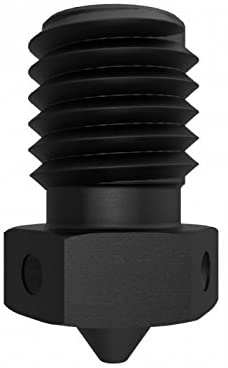
Available in a range of sizes, E3D’s flagship nozzle is great for ensuring consistent, high-quality prints across a range of situations.
- Varied bore diameters – the nozzle comes in a variety of different sizes to suit different filament thicknesses.
- Highly durable – the hardened steel nozzle can resist high temperatures and any wear-and-tear from the print process.
- Higher price point – as with any upgrade, the price is higher for E3D’s nozzles.
Known as one of the best V6 nozzle manufacturers on the market, E3D designs components that are compatible with a vast swathe of 3D printers. Their Hardened Steel Nozzle is a prime option for those looking to experiment and print with abrasive materials.
The high-quality black hardened steel construction is among the most durable out there, suitable for years of use. The nozzle can support temperatures up to 500 degrees, plenty to make the most of high-temperature materials like Nylon. A smooth interior lining ensures clogs are rare, perfect for those looking for a reliable nozzle. With the aim of offering builders plenty of options, the E3D Hardened Steel Nozzle ships in a broad range of sizes suitable for both 1.75mm and 2.85mm filament, covering every application from detail-oriented miniatures to large practical creations. The sizes offered include 0.25mm, 0.3mm, 0.35mm, 0.4mm, 0.5mm, 0.6mm, and 0.8mm.
Considering the quality and durability of this nozzle, the price point may come as no surprise to some – though we'd like to note it is quite high. Other than that, this top-notch 3D printer nozzle is one of the best in the industry, and perfect for your 3D printer!
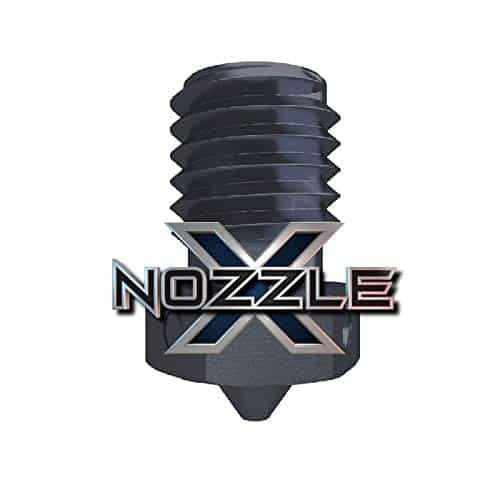
If you need a top-quality nozzle replacement, the Nozzle X is an ideal choice: working perfectly with a wide range of thermoplastic filament options.
- Anti-stick coating – the Nozzle X massively reduces build-up of detritus, making for easy cleaning.
- Multi-material design – this nozzle literally has the best of all worlds, with a mixed construction to optimize extruder performance.
- Difficult temperature configuration – because of the more complex design, acclimatizing the Nozzle X in your 3D printer may be more difficult.
Another great option from E3D, the Nozzle X is one of the more versatile options due to its unique construction, marrying a hardened tool-steel base with nickel plating and a WS2 ‘polyphobic' nano-coating.
The novel design aims to combine the abrasion resistance of hardened steel and the temperature resistance of materials like copper to create a nozzle that is extremely durable and heat-resistant. The result is that the E3D Hardened Steel Nozzle can confidently print a range of materials, everything from ABS to abrasive carbon fiber-filled PEEK by way of thermoplastics. The Nozzle X is extremely affordable for what E3D calls the ‘one nozzle to rule them all', and can take Mordor-level heat. The nano-coating works to ensure the hot filament doesn't stick to the nozzle surface to promote smooth layering throughout a print and reduce printer maintenance. E3D is so confident in the durability of the Nozzle X that the company offers a lifetime wear warranty: should the nozzle wear out, E3D will replace it free of charge, no questions asked. E3D Nozzle X offers variants for both 1.75mm and 2.85mm filament, along with common bore diameters from 0.25 mm to 0.8mm.
The only complaint we can throw at the Nozzle X is that temperature configuration be complex when paired with certain printers and materials. Beginners may find the troubleshooting offputting and may prefer to opt for a more user-friendly brass alternative. Otherwise, the Nozzle X is every bit the powerful and useful 3D printer nozzle for your next model-crafting session!
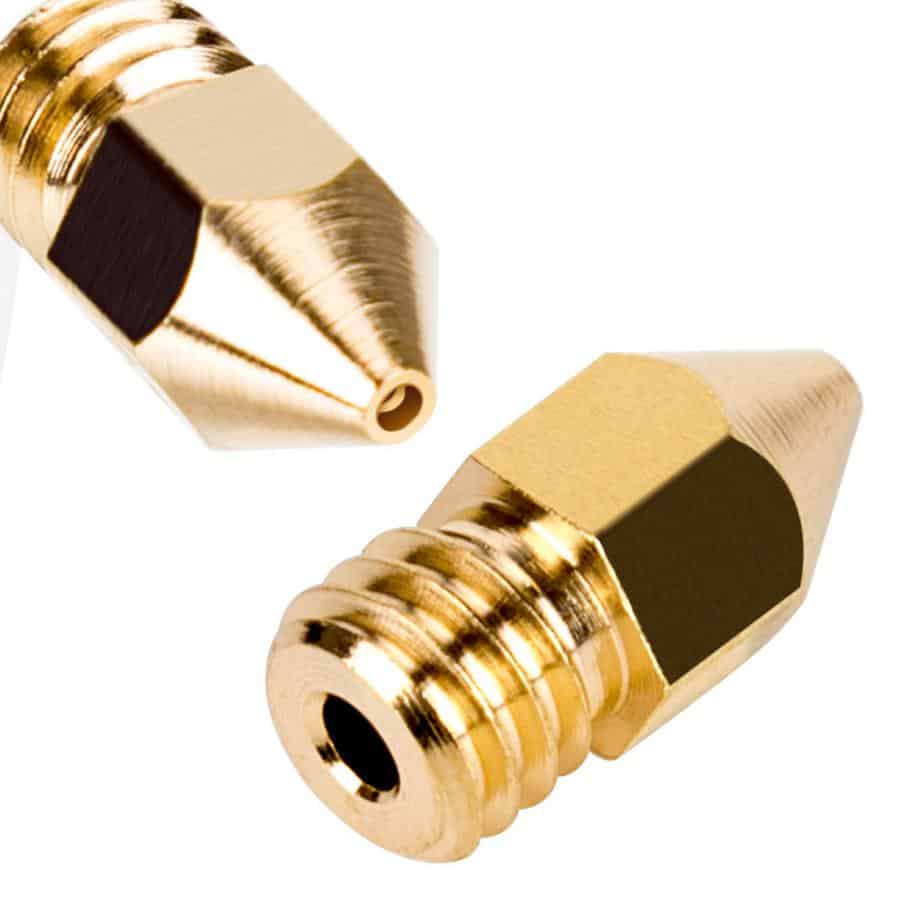
Brass is one of the most popular nozzle materials, and LUTER’s range of brass nozzles are our top pick for great results with a range of thermoplastic filaments.
- Varied bore diameters – like with E3D’s range, the LUTER Brass Nozzles are available in a range of different diameters for different use cases.
- MK8 compatible – these nozzles are compatible with the latest in extruder technology.
- Incompatible with abrasive filament – materials like Carbon Fiber or Wood filament are incompatible with these brass nozzles.
Being the most popular type of nozzle, brass nozzles are the most prone to wear and tear. LUTER Extruder Nozzles stand as a low-cost way to swap out a tired 3D printer, with these models among the best MK8 nozzles for high temperatures at low costs.
Print results are smooth using these nozzles, and they work well to avoid clogging thanks to a rounded chamfer. Perhaps the most attractive feature of the LUTER Extruder Nozzles is the range of bore diameters included in the set (conveniently housed in a plastic case for easy storage). This makes them compatible with a range of 3D printers, from amateur up to professional.
It goes without saying that as brass-based nozzles, the LUTER Extruder Nozzles aren't suitable for coarse, abrasive materials. Using them with anything other than PLA or ABS grinds away at the nozzles' innards, rendering them unusable over time. Clogging problems have been known to crop up here and there, same as any 3D printer nozzle. Other than that, we can confidently recommend the LUTER Nozzles as top-tier brass 3D printer nozzles!
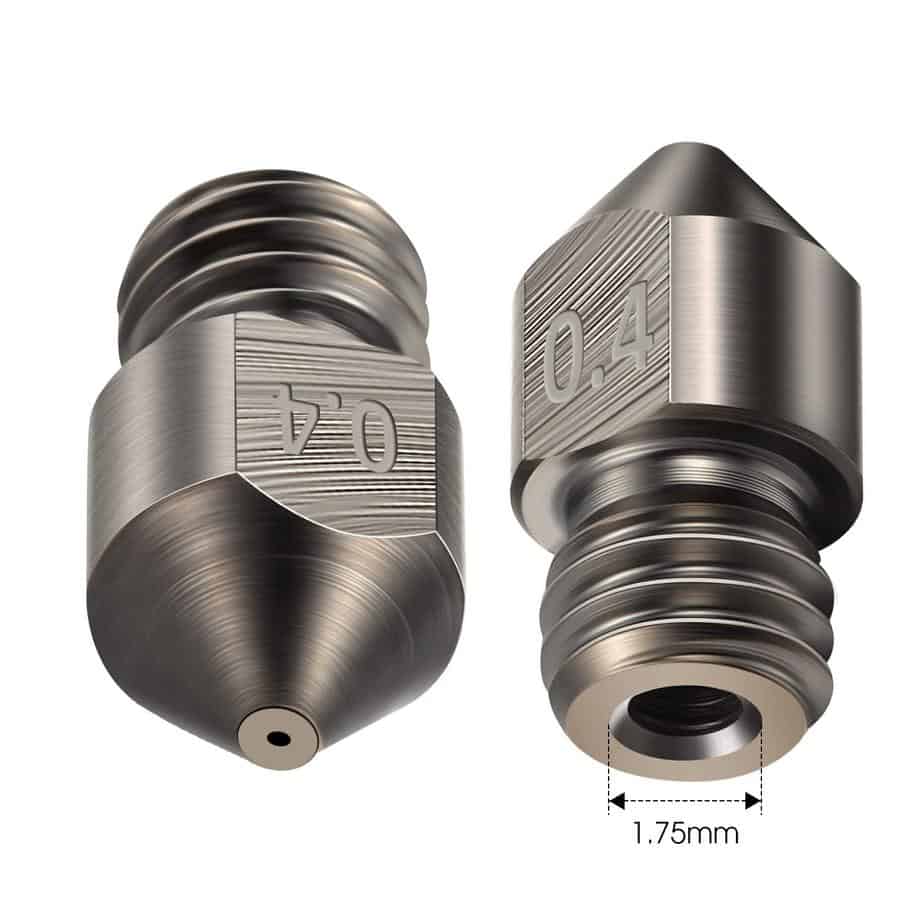
For the hardened steel build of the E3D nozzle at a more affordable price, consider the Mudder alternative.
- Highly durable – these nozzles are highly resistant to wear, heat and corrosion for extra longevity.
- Multi-pack options – Mudder ships these nozzles in packs of as many as fifteen, you’ll always have a spare to hand.
- Higher temperature requirements – less conductive than brass, these Mudder nozzles require higher temperatures to be effective with some thermoplastics.
Those looking to tinker with coarse materials without a fragile brass nozzle, consider the Mudder Hardened Steel Nozzle. Shipped in sets of either five, ten, or fifteen; these 3D printer nozzles feature a bore diameter of 0.4 mm and support for 1.75 mm filament – one of the most popular configurations, balancing precision and print speeds.
Compared to E3D hardened steel nozzles, these are considerably more affordable. The hardened steel construction makes the Mudder Nozzles suitable for abrasive materials such as carbon-fiber fills, fiberglass, and metal-infused filaments. The thermoformed steel ensures resistance to corrosion and heat to reduce softening and guarantee durability over the long term, even after prolonged use. Hardness tallies up to 50 HRC.
It's worth noting that the Mudder Nozzles are designed for printers using MK8 hot ends, such as Creality's Ender range. As such, the nozzle performs poorly with some thermoplastics due to the need to push much higher temperatures than brass nozzle options. Even with suitable materials, temperatures do need to be adjusted accordingly to get good results. If you can handle this more manual approach to 3D printing, then the Mudder Nozzles should be ideal replacements for your printer!
Features and Considerations
Despite being a very small component, nozzles have a significant influence on the quality of your prints. Here’s what to consider when choosing one:
Nozzle Material
3D printer nozzles come in a variety of materials, each suited to different applications. Brass and hardened steel are the most common; with more rugged materials like tungsten also used in select nozzles. There are also assembled nozzles that pair two or three different materials, such as reinforced steel and a ruby tip. Here’s a brief outline of the most widely used materials.
Brass – By far the most common, brass nozzles are favored for their thermal conductivity, low maintenance, and low cost. They tend to pair well with more pliable filaments such as PLA, but due to their brittleness aren’t suited to more abrasive materials such as carbon fiber. Brass nozzles also have a shorter life span than other materials.
Stainless Steel – More resistant to erosion and general wear and tear than brass, stainless steel nozzles work better with coarse materials such carbon fiber, NylonX, metal-infused filament, and the like. They are also prized for lead-free printing, particularly important for prints made of FDA-approved filament for medical and food applications. This extra resistance to abrasive materials does come at a cost to thermal conductivity, though.
Hardened Steel – The most durable and rugged, hardened steel nozzles are the most expensive but are designed to handle the stresses of abrasive materials day in, day out, and have the best life span of any nozzle type. Much like stainless steel, thermal conductivity takes yet another hit. The internal lining of the nozzle is rougher than other options, which can affect extruding precision and the final quality of prints.
Bore Diameter
3D printer nozzles are available in a variety of diameters, each adapted to different applications and uses. Bore diameters are available in these standard sizes: 0.1 mm, 0.25 mm, 0.3 mm, 0.4 mm, 0.5 mm, 0.6 mm, 0.8 mm, 1.0 mm. However, 0.4 mm is by far the most popular, and chances are this is what you'll want for a balance between accuracy and reasonable print times.
As a general rule, larger bore diameters print faster, extrude more filament, and are less likely to cause clogging. However, the size does limit the detail and precision you can expect from a final print.
On the other hand, small bore diameters offer better precision and finer details because they allow for smaller layer heights, but at a cost to print speeds and a heightened chance of issues, notably clogging. Additionally, they fare better when used with more flexible, smooth materials such as ABS and PLA.
Compatibility
When it comes to choosing a 3D printer nozzle, there are many options you can choose from. The size of the nozzles can vary significantly. If all the nozzles that you own are compatible with your 3D printer, you can switch between the compatible nozzles easily without issue. However, care should be taken when purchasing new nozzles. If the nozzle does not quite fit onto your 3D printer, it is not compatible: the nozzle should connect easily without it being forced.
When looking at different nozzle attachments, you will likely come across non-branded options. While these can be tempting, especially as they tend to come cheaper, it is not guaranteed that they will be compatible.
Additionally, for applications such as food molds or cookie cutters, double-check that your 3D printer nozzle is safe to use!
FAQs
Are 3D printer nozzles interchangeable?
To an extent, yes, 3D printer nozzles are interchangeable. However, just because some can be interchangeable, this does not mean that they are universal. For the vast majority of 3D printers, you will only be able to use nozzles that are created by the manufacturer. This is because you need to ensure that it is compatible and will fit the printer.
Are steel nozzles better?
While many people believe that steel nozzles are the best choice over the other options we have included, this is not necessarily true. It does depend on the quality of the nozzle, and how it was manufactured. Different nozzle types have their own advantages, and will work better with certain types of materials. When you purchase a 3D printer, it will typically come with a brass nozzle included. Brass nozzles are great when creating detailed objects, and are great for both ABS, and PLA. When it comes to using abrasive materials, this is when you will want to use a steel nozzle. This is because steel nozzles are stronger, and work better with this sort of material.
Verdict

The E3D Hardened Steel Nozzle promises to transform your 3D printer into an abrasive material printing workhorse. With quality etched into every millimeter, the higher price is warranted, as this E3D mozzle should last for years to come! For consistently top-quality 3D prints, choose an E3D Hardened Steel Nozzle today.
If you’re new to 3D printing and looking for a budget model to experiment with, we have a guide on the best 3D printers under $300!

